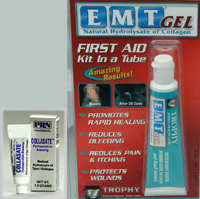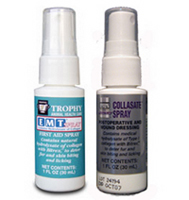In This Issue....
Sledge Dog Memorial Fund Update
Product Review: Collasate™/EMT™
Navigating
This Site
Index of articles by subject
Index
of back issues by volume number
Search The
Fan Hitch
Articles
to download and print
Ordering
Ken MacRury's Thesis
Our
comprehensive list of resources
Talk
to The
Fan Hitch
The Fan
Hitch home page
ISDI
home page
Editor's/Publisher's Statement
Editor: Sue Hamilton
Webmaster: Mark Hamilton
The Fan Hitch welcomes your letters, stories, comments and suggestions. The editorial staff reserves the right to edit submissions used for publication.
Contents of The Fan Hitch are protected by international copyright laws. No photo, drawing or text may be reproduced in any form without written consent. Webmasters please note: written consent is necessary before linking this site to yours! Please forward requests to Sue Hamilton, 55 Town Line Rd., Harwinton, Connecticut 06791, USA or mail@thefanhitch.org.
This site is dedicated to the Inuit Dog as well as related Inuit culture and traditions. It is also home to The Fan Hitch, Journal of the Inuit Sled Dog.

Collasate™/EMT™
reviewed by Sue Hamilton
Here's a product that belongs in every Inuit Sled Dog owner's first aid kit. Having said that, you're thinking it must have something to do with wound healing. Right on!
First a clarification: Collasate™ and EMT™ are identical products. They are made by the same company, PRN Pharmacal in Pensacola, Florida, USA. Like many companies, PRN markets one product to both veterinarians as well as we "lay" people. In this case, Collasate™ used to be available exclusively through veterinarians. Then Pharmacal created EMTGel™ and began marketing it directly to the rest of us, under the manufacturing name Trophy Animal Health Care. And in doing research for this product review, I see that the product under the name of Collasate™ is now available to everyone, not just vets. Go figure.
Although the manufacturer claims antibacterial properties for the product, Collasate™/EMT™ is not a primary wound cleaner, as are formulations of chlorhexidine (Nolvasan ™) or iodine (Betadyne ™). These, or something like hydrogen peroxide (if that's all you have access to) have antibacterial properties of varying degrees and are used first to flush dirt, hair and any other junk from a wound in addition to reducing bacterial contamination. However, the very qualities which make some compounds great antibacterials, can actually do more to impede wound healing than enhance it.
Collagen is a natural protein found in living things. It is the structural protein of skin, among other body parts. When tissue is damaged, it is collagen that comes to the rescue. According to PRN (a.k.a. Trophy), Collasate™/EMT™ "is designed to enhance the body's own natural healing process. Its collagen interacts with the wound at every stage to reduce pain and promote healing." The product aids in natural clot formation to control bleeding, has anti-inflammatory qualities, helps remove bacteria and debris, keeps conditions at the site of the wound favorable for healing, provides a barrier to contamination and aids in wound closure by providing collagen in addition to what the body offers during the process of tissue regeneration. These last two features can be rather important for Inuit Dog owners. Not all wounds are simple little cuts whose raw edges will be approximated (brought to touching each other) on their own or because of closure by sutures, staples or surgical glue. When wound edges cannot be brought and kept together for optimal healing, a wound must close by "second intention". In this scenario, cells from the wound's edges migrate to fill in the gap. This procedure takes time - depending on the size of the defect, tissues involved, how much force and movement is applied to the region, licking and rubbing, persistent contamination and infection and/or treatment with antibacterials that impede wound healing. These factors will also determine the degree of scarring that will result when the wound finally granulates in as well as the strength of the new tissue in the repaired defect. Folks, if you've got a substantial lead in the ice to get across, you'd better hope you have a good sturdy qamutiq to bridge the gap. Collasate™/EMT™ is the medical equivalent of that qamutiq!

This collagen product comes in two formulations, a gel and a spray. The gel is thick and gooey and stays where you put it (unless licked off). Collasate™ comes in a 7 gram (about 1/4 ounce) screw cap tube. EMTGel™ is sold as a 28 gram (1 ounce) tube with a handy flip-top cap. Both versions' spray comes in a 29.5 ml (1 ounce) size. The manufacturer claims the spray is good for treating hot spots and lick granulomas, too, and contains something said to have a taste dogs don't like. (I have not used the spray, but I bet they never tested it on Inuit Dogs!)
The price of the gels and the sprays is all over the place, depending on where you buy. For sure the PRN Collasate™ gel is more expensive when you figure that its tube contains only 25 percent of that of the EMTGel™. The best way to purchase is to surf the web using the brand names as key words and compare prices of the abundant sources you will find. The prices range from around $9.00 to $15.00 USD. Here is manufacture contact information:
EMTGel™
Trophy Animal Health Care
8809 Ely Road Pensacola, FL 32514
1-800-336-7087
Email: customerservice@trophyanimalcare.com
Web address: http://emtgel.com/
Collasate™
PRN Pharmacal
8809 Ely Road
Pensacola, FL, 32514
Phone: 1-800-874-9764; FAX: 850-476-7087
Email: contact@collasate.com
Web addresses:
http://www.collasate.com/index.html
Note: Depending on the nature of the wound or defect, the use of these (or any other) products may not be appropriate substitutes for intervention by a veterinarian, in regions where professional treatment is readily accessible.